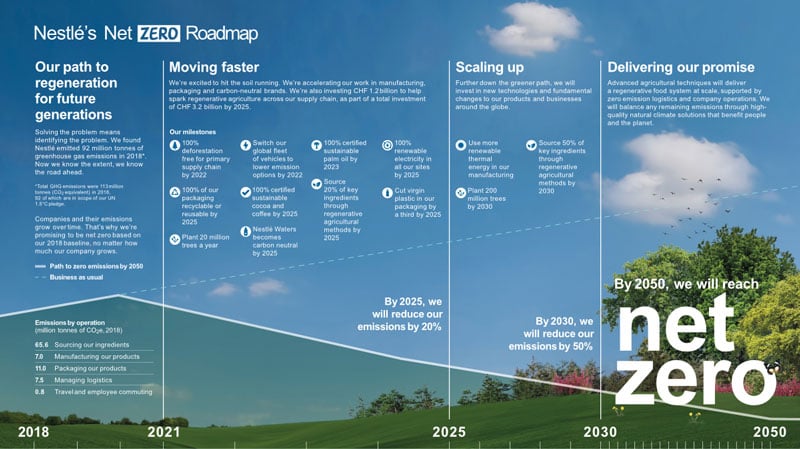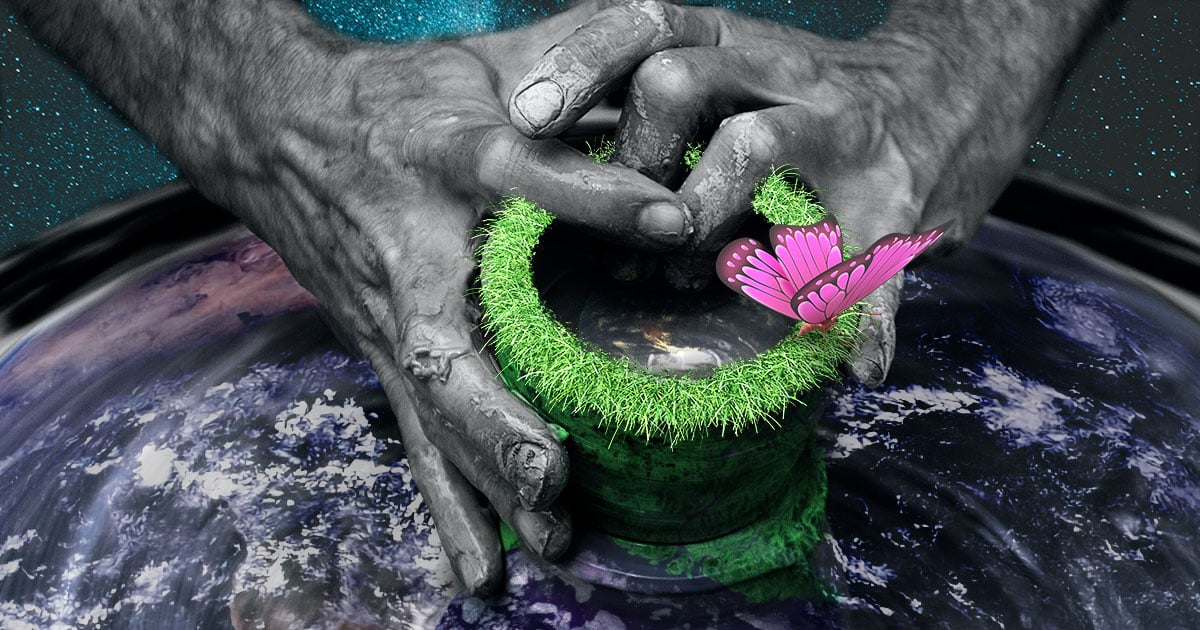The question is no longer why the sustainability agenda holds strategic relevance or what action must be taken in order to achieve it - but rather how to do so.
In order to achieve ambitious sustainability targets, businesses must move from an extractive approach to support generative and inclusive design. Sustainable business models deliver value propositions that create and leverage environmental and societal surplus, often carrying accumulative secondary value.
Embedding Good Stewardship into Product & Service Design
Innovation teams must embed good stewardship as a fundamental practice into product and service design to discover new avenues to create business value while being good for the environment and society. The responsible management of such processes embraces human-centered design to validate needs, avoid unnecessary production, and promote conscious consumption. Good stewardship explores various design methodologies and different materials to meet consumer expectations while controlling cost, using fewer resources and complying with environmental regulations.
This is essential because product design ultimately impacts the entire product lifestyle. An estimated 80% of a product’s total environmental impact is determined during the design phase. In most instances, there is no going back to make a product more durable or modular to extend its life, or make its components less harmful to people or the environment.
To evolve and transition to more sustainable, regenerative product and service alternatives, innovation teams must embed good stewardship upfront by emulating the following five design principles:
- Circular Design: Circular design moves away from the traditional take-make-waste model and continuously repurposes resources to achieve a closed-loop. Circularity prioritizes the re-design of products and business models to promote the reduction, repair, re-use, re-distribution, and recycling of products.
Biomimicry: Biomimicry is an approach that involves searching for solutions to technical problems by studying those already found in nature. The theory promotes learning from and then emulating natural forms, processes, and ecosystems to create more sustainable and healthier human technologies and designs.
- Lean Design: Lean design principles prioritize cost- and time-efficient production, delivery, and consumption. Processes are continuously improved to make use of only the absolute minimum resources required. According to The Lean Enterprise Institute (LEI),
founded by James P. Womack and Daniel T. Jones, there are five key lean principles: identify value, map the value stream, create flow, establish pull, and seek perfection. - Inclusive Design
: Inclusive design seeks to optimize the functionality of an environment, product, or service so that it can be accessed universally and used by as many people as possible, regardless of age, gender, and level of ability. Shaping comfortable solutions that enable participation and belonging for diverse people must be woven into brand DNA. - Clean Design: Clean design prioritizes energy efficiency, pollution control and sustainable resource-use systems, and negative emissions technologies. Working towards a net-zero emission future, clean design creates investable opportunities in response to demand for low-carbon products and infrastructure. The transition to a cleaner economy requires a move to lower emissions as well as a more sustainable relationship with nature.
- To find out more about the importance and implementation of these design principles, download our sustainability toolkit.
From Pledges to Plans
Committing to good stewardship is the easy part. And in fact, commitments to net zero have doubled in less than a year. Currently, 61% of countries (124) and 21% of the world’s 2,000 largest public companies (417) have set net zero targets for the next 10 to 40 years. This is according to an assessment from The Energy & Climate Intelligence Unit (ECIU) and Oxford Net Zero, which looks at the progress made since the Paris Agreement in 2015 that set the ambitious yet imperative goal of reaching net zero carbon dioxide emissions globally by 2050.
It is delivering on these commitments that is the challenging part. Achieving net zero and embedding good stewardship principles throughout an organization—from sourcing to design to distribution—is a journey. And, as such, it requires a detailed and deliberate roadmap.
Nestlé is one such company that has followed up its pledge with a clear and actionable plan to reach net zero by 2050. Looking at its whole value chain and product lifecycle, Nestlé has determined the carbon footprint of its products as a benchmark, invited participation from all stakeholders, and laid out a set of key actions going forward. These include:
- Sourcing ingredients sustainably: Collaborating with farmers, suppliers, and communities to ensure the protection of livelihoods and the ecosystem
- Evolve packaging: Investing in innovation and alternative business models to reduce packaging waste
- Greening logistics: Implementing cleaner and leaner models for storing and transporting products
- Moving toward carbon-neutral brands: Driving sustainability and transparency from a brand perspective
- Transforming product portfolio: Designing and reformulating products using low-carbon ingredients and processes
- Using renewable energy in manufacturing: Transitioning to renewable electricity and fuel sources throughout operations
- Removing carbon from the atmosphere: Employing regenerative techniques in agriculture
- Advocating for action: Galvanizing action amongst all stakeholders, governments, NGOs, and communities

Source: Nestlé (2021)
Evidence of a clear plan such as this is essential as corporations and their sustainability commitments are increasingly scrutinized by investors, consumers, employees, and all other stakeholders. These commitments must be backed by proper governance, accountability, and action. Fail to do so, and an organization risks much more than being accused of greenwashing.
From Design to Roadmapping
What’s clear is that good stewardship doesn’t just happen. It must be central to an organization’s purpose, part of the culture, and inherent in the design of product and service lifecycles.
Bringing this sustainable design to life requires strategic planning, internal consensus, and a clear outline of the steps, resources, and capabilities needed for product development in order to deliver on short- and long-term goals.
This is where a product roadmap comes in. Roadmaps can serve as a single source of truth and actionable planning tool for ensuring the vision, direction, priorities, and progress related to product design and development are fully aligned. Moreover, roadmaps can be shared within and between business units, raising transparency and clarity while managing expectations at all levels.
A strategic roadmap should comprise:
- Vision: what is the future vision for a product or service, and how will it help deliver on sustainability targets?
- Strategy: what steps, resources, and milestones are required to execute the vision?
- Goal: what is the timeline, including benchmarks and metrics of success?
Building these elements into a digital roadmap enables organizations to identify synergies and time inconsistencies within strategic planning. This agile innovation ecosystem will help organizations make better, informed decisions that support their own goals as well as a more sustainable, equitable, and prosperous future.
ITONICS Roadmap is an agile and collaborative online software tool for strategic planning of products, markets, technologies, and resources. Users can create customized views for different target groups or specific use cases using additional dynamic filter options. In this way, the gaps and synergies in product development can be identified quickly and accurately across an organization.





